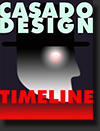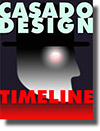The money path to creativity
If you use your creativity a lot and are successful, you probably have found your own private path to creativity. Good examples are singer/songwriter Bob Dylan and Sting. If I say their names, you already know what to expect of their music. If I say Matisse or Picasso, you know what to expect of their art and if I say Stephen King, you know the type of story you’re about to read. There are many more examples but you get the point. All these people have a path to their creativity already in place.
What is a path?
A path is an accumulation of successful initial directions in your thought process that seem to re-appear every time you begin your creative process. You depend your mind to start with these directions that always fit together with your thought process to combine for a creative solution. It’s your own style of thinking like the sound of Dylan’s voice or the brush strokes by Matisse. It’s your “go-to system”.
How does one create a path?
To develop a path takes time and a lot of experience. Alexander Calder, an artist, loves primary colors and black. He likes kidney shape forms for his famous mobiles. He totally understands the primary colors and kidney shapes and how to use them. He never worries that his art will go out of favor or that he will be seen as a one trick pony by using these simple elements over and over again. He knows the breathe of these elements having used them for years.
As you progress and exercise your creativity you will find your own set of directions. They may not be as simple as primary colors, but you will get to know your own set that seem get you to where you want to go. These are things that are retained in your brain rather than written down. So for this to happen, you need to use them a lot as well as experiment. It’s the experimentation that will develop a unique group of directions that will come up every time.
I believe that the more complex your tool set is, the more creative your solutions will be. The complexity will come from experimenting with your thought process. Experiment by being morenaïve or more obvious. Plug in ideas that seem cliché. Those will be closer to your initial concept than trying to go out into left field and finding some abstract idea that doesn’t mean anything to anyone.
That was my idea!
Often we find ourselves seeing solutions or concepts done by others that had pass through your mind at one time or another. This happens as a result of that other person being on their creative game all the time, while experimenting with simplicity. You could also have a similar creative path as that other person, but they use theirs more than you. Also, the problem to be solved is fairly common.
Conclusion: If you want to be a valuable creative contributor you need to develop your path. Don’t under estimate the importance of a simple solution, and be the first one to do it.











